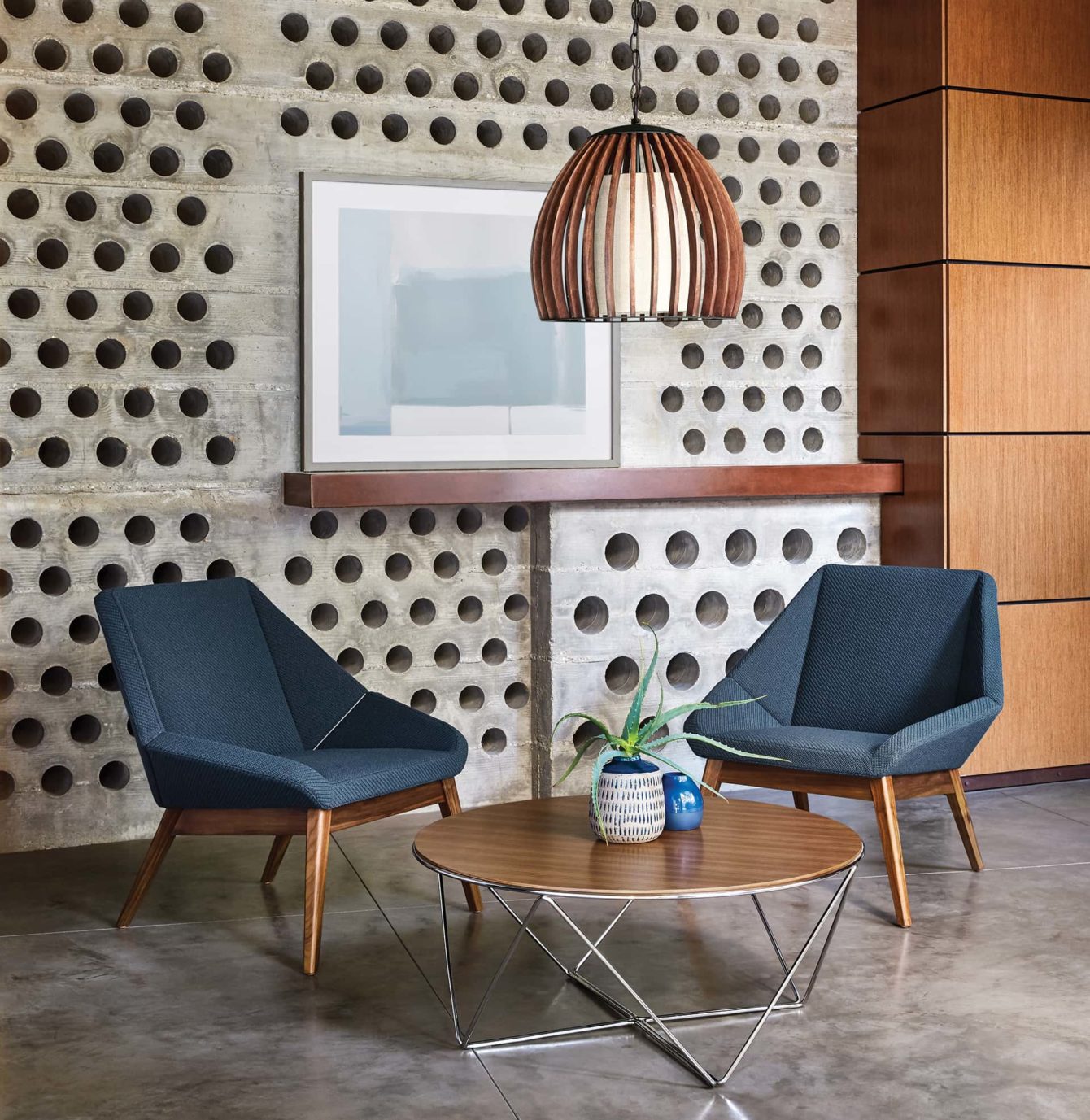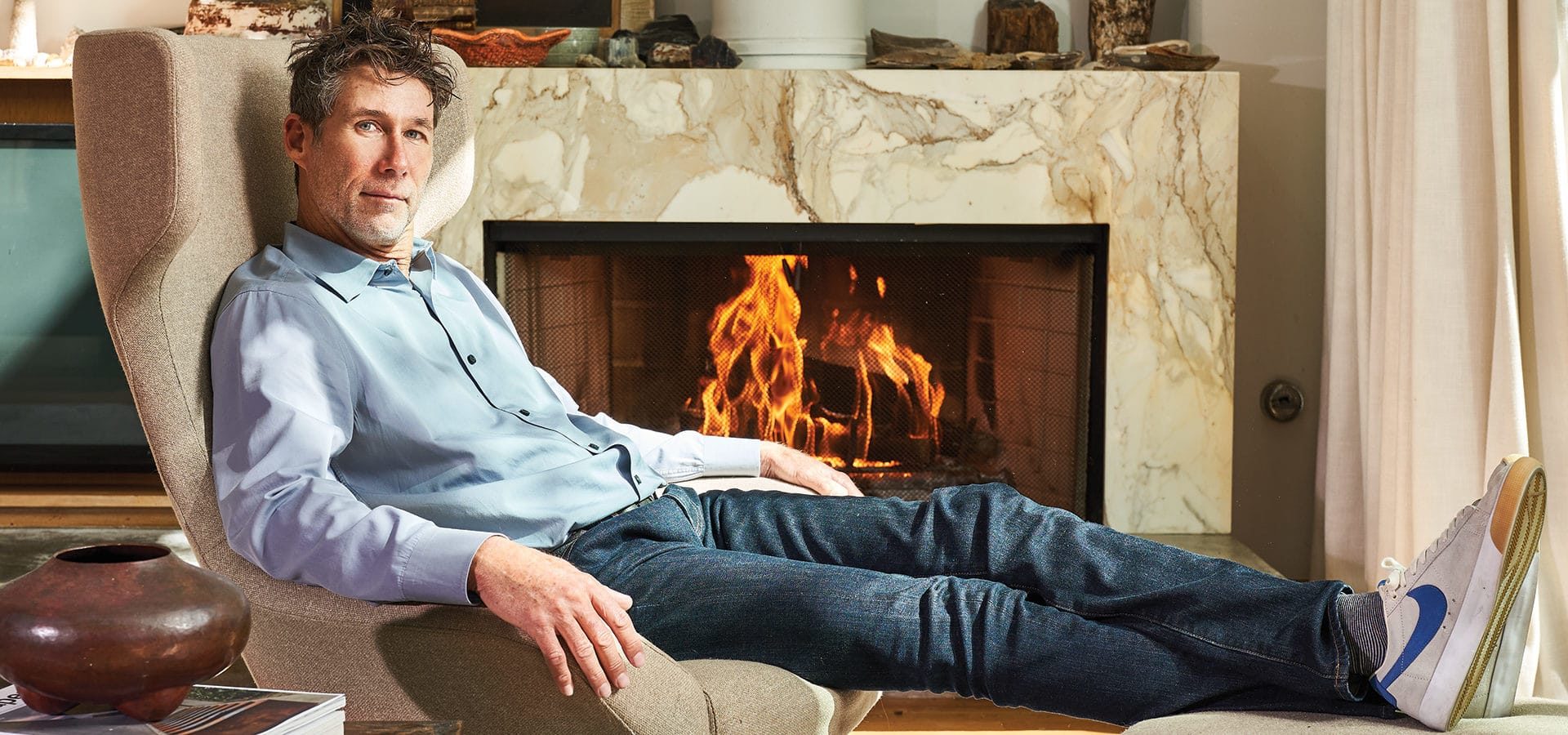California Furniture Designer Mark Saffell Rethinks Work From Home
Sitting pretty.
-
CategoryArtisans, Design, Homes + Spaces, Makers + Entrepreneurs
-
Written byTanya Monaghan
-
Photographed byShane O’Donnell
For Mark Saffell, beauty lies in the yin and yang of art and architecture. Mark’s furniture creations marry the timeless architectural detailing with thoughtful functionality and design for today’s living. “I always loved the scale of furniture as a creative piece and the fact that there is this intimacy in the way you interact with it,” he says.

Mark grew up in Florida as a surfer. Right out of school he attended a vocational school for boat building and boat design with big dreams to build a vessel and sail around the world chasing surf. As much as he loved building things with his hands, he later realized the gypsy life wasn’t for him.
He switched it up and enrolled at Ringling College of Art + Design in Sarasota, Florida, to study interior architecture. In his mixed media art classes, he enjoyed making furniture and won a few competitions for his designs. While studying he also worked for interior designers and architects and thrived in this environment.
After living as a waterman in Florida for most of his life, Mark set his sights on moving to a big city. After considering Chicago or New York, he was eventually lured to Los Angeles because of its proximity to the ocean. The South Bay lifestyle allowed him to be a working professional as well as a surfer. Mark gained valuable experience working for several renowned architects and design firms such as Sussman/Prejza.
Mark enjoyed making one-off pieces of furniture, several of which made it into museums such as the Gallery of Functional Art in Santa Monica and some notable retail stores. Referred by a friend, he was able to land an interview for a job with renowned industrial designer Donald Chadwick, one of the top designers for Herman Miller. Mark got the job, and it was in this small studio that he received an elite industrial design education and met his current business partner, David Ritch.
The pair began working on very innovative projects, including the Aeron chair for Herman Miller. It was also during this time that they began their collaboration—designing simple wood chairs and upholstered pieces. Mark and David departed the studio and formed their own company, 5D Studio.
“It’s not rocket science, right? But to solve a problem while creating something beautiful and truly unique … that’s an accomplishment.”
Today they have a diverse portfolio of designs and clients. Their design work, which includes seating, tables, desks, workstations and systems furniture products, received top awards from i-D Magazine, IIDEX and the IIDA, as well as winning best of show at NeoCon and IDSA–Designs of the Decade. Their work has been featured at the Cooper Hewitt Smithsonian Design Museum and the Pasadena Museum of California Design.

Mark describes his natural aesthetic as modern, inspired by art, architecture, nature and Japanese culture. “We do a little bit of residential design, but we design mainly for the contract market focusing on furniture for the office and the health care and education sectors,” he says.
“The beauty of office furniture is that the way we work is constantly changing, especially now. We are always presented with new challenges, and we like to think of ourselves as problem-solvers.”
Since the pandemic, most companies were forced to reduce their real estate in office space. “It’s always been interesting to see how residential design influences the office world design,” says Mark, “but now with COVID-19, it will be interesting to see if the office is going influence residential design.”
In the health care sector, there is often a huge disconnect between beautiful, modern, state-of-the-art hospitals and the dated furniture inside. These design challenges prove even greater when considering social distancing requirements. 5D Studio is currently designing a tandem seating piece in which seats move across a wall to fit in a formation that accommodates a small group of people or family arriving at the doctor’s office together, yet it separates them from the next patient. The goal is not only to problem-solve but to create something functional, comfortable, performance-driven and aesthetically pleasing.
In the education sector, the designers will be creating more easily mobile nesting pieces, as kids may need to move to different areas of the classroom to accommodate social distancing.
“I am a furniture designer. A chair has been done, I will be the first one to admit it, and it’s not rocket science, right?” says Mark. “But to solve a problem while creating something beautiful and truly unique … that’s an accomplishment.”
An Urban Farm in Fresno Seeks Investment and Engagement with Local African-American Youth
It’s about both harvesting produce and good work skills.
Palm Springs Modernism Week Goes Online for February and Live in April
Double your nostalgia.
Canndescent Looks to Project Light into the Modern Cannabis Market
In a competitive California market, CEO Adrian Sedlin is building a different type of company.
Get the Latest Stories






